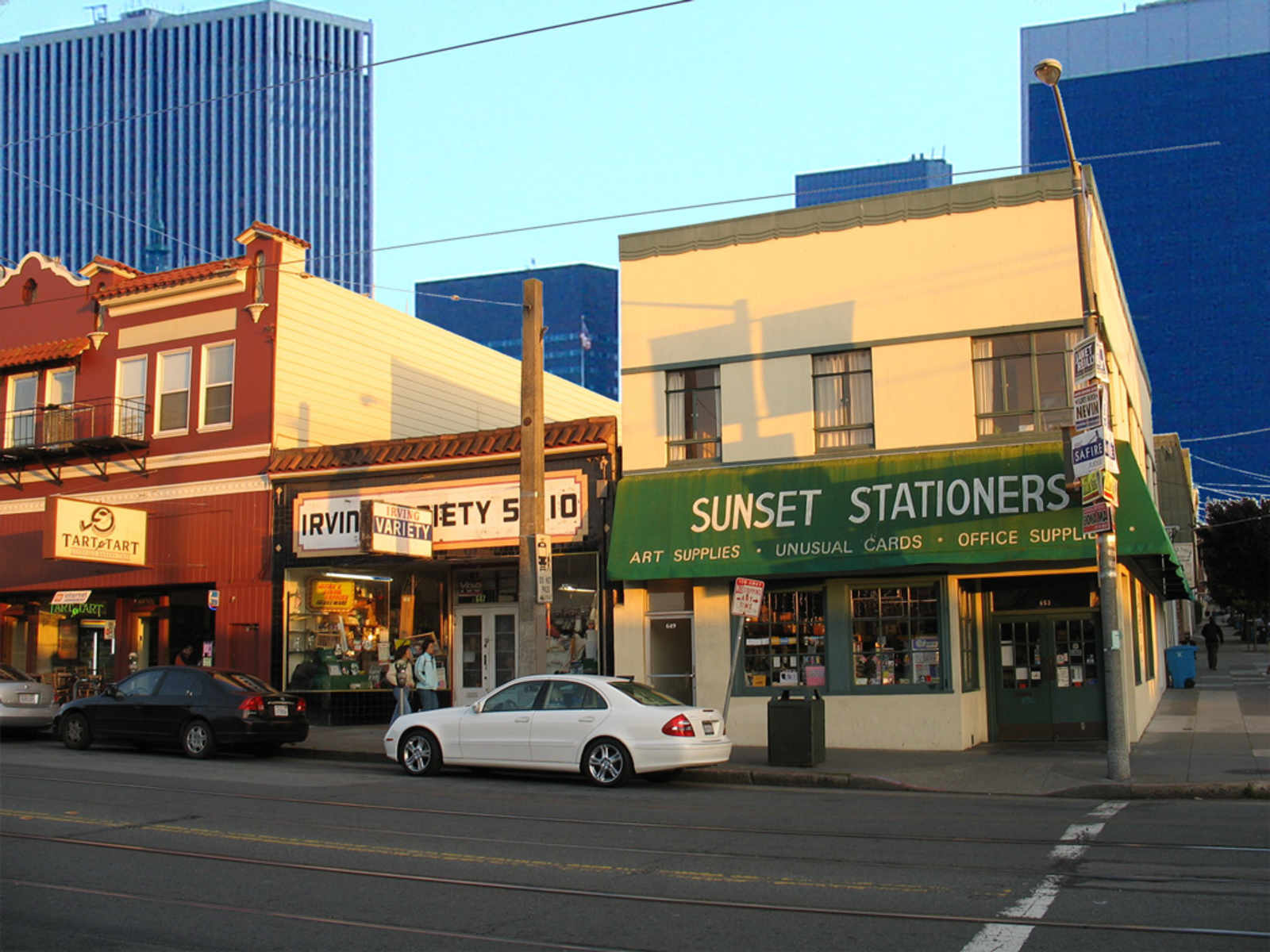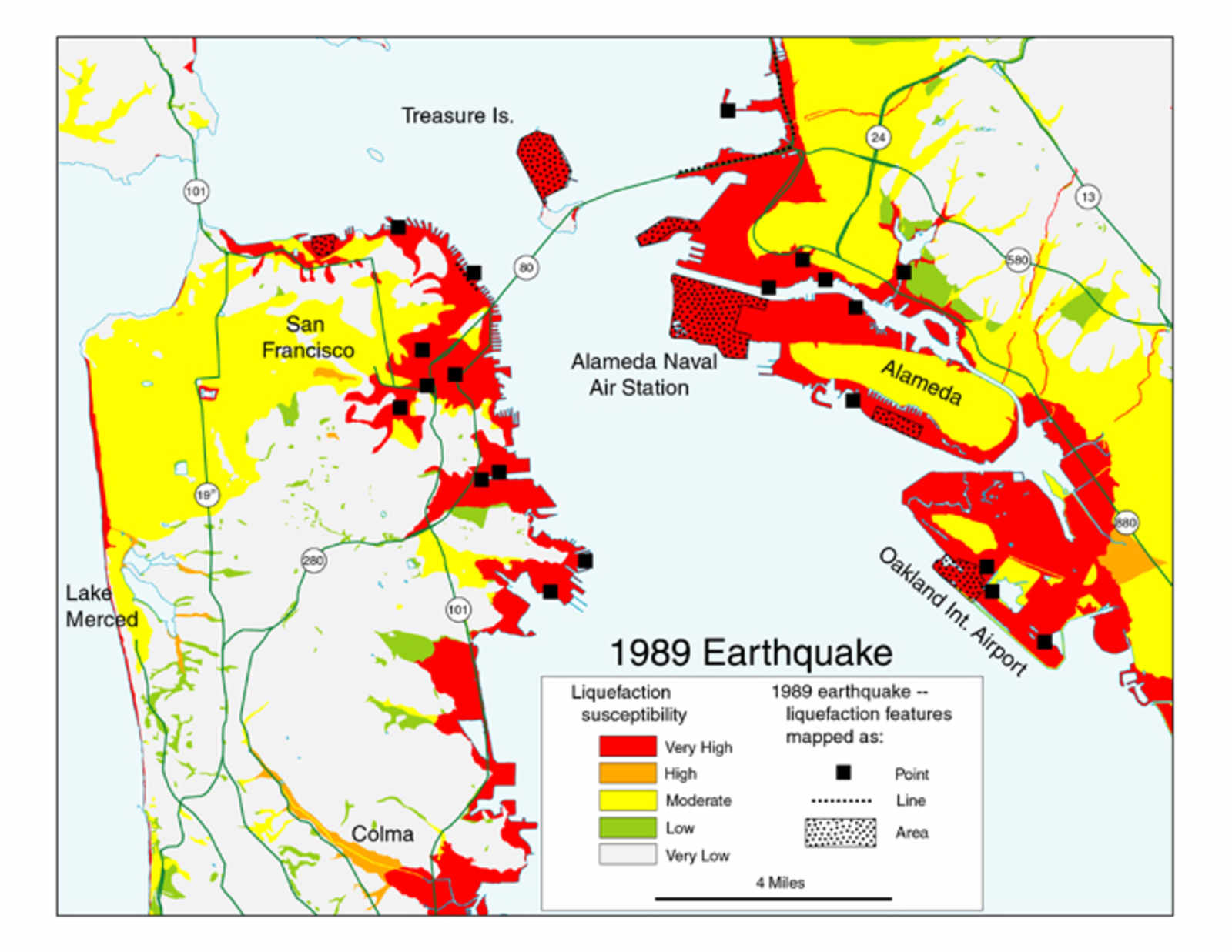This Crazy, Old Zoning Trick Probably Won't Solve Your Housing Situation
— By Jackson West (@jacksonwest) |

At some point, technology reporters will figure out that maybe it’s not the best idea to wander off their beat and wade into the roiling torrent of housing affordability and real estate development issues without doing some homework first. Until then, insecurity and defensiveness will keep giving us gems like Nick Bilton’s “The Housing Market With Nowhere to Go (but Up)” and the latest, from Berkeley-based Business Insider reporter Kyle Russell, “This One Intersection Explains Why Housing Is So Expensive In San Francisco.”
The intersection that’s responsible for all of San Francisco’s problems—because it’s officially the worst—is 10th and Irving, one of many intersections in a large area of San Francisco that is zoned for a maximum of four stories. But many of the buildings only reach two stories! Ipso facto, we should relax zoning regulations to allow developers to build as high as they like, even though they haven’t yet seen fit to do so in a neighborhood that’s not particularly close to San Francisco’s job centers and even farther from the jobs in Silicon Valley. (They are, however, building 89.9% more luxury high rises than we need in the Tenderloin and SOMA, already the densest area of the city.)
Of course, more and less reasonable appeals to deregulate modern urban development have been made at least since the 1961 publication of Jane Jacobs’ “The Death and Life of Modern American Cities,” but a partner at startup investment racket Y Combinator made the argument for the millionth time on Twitter last weekend, so Business Insider was on it. Publisher Henry Blodget, who turned to journalism after being banned from finance for life after allegedly touting terrible investments during the dot-boom, promoted the post in an all-caps shout as the solution to San Francisco’s housing affordability crisis. Please, SanFransplain it to us!
DEAR DISGRUNTLED SAN FRANCISCANS: Stop blaming “tech” for your real-estate problems. Start blaming ridiculous zoning http://t.co/KU23FNuJEg
— Henry Blodget (@hblodget) April 9, 2014
San Franciscans demanding sunlight in their parks? “Ridiculous,” declares Blodget. Of course, there are plenty of New Yorkers fighting against luxury supertowers for billionaires next to Central Park, and regulations mandating structural accommodations for street-level sunlight are as old as the Woolworth Building. While it’s true that median rent in San Francisco is disgruntingly high at $1,493, in Brooklyn it’s nearly twice as much at $2,900 and it’s even worse in Manhattan. The neo-liberal, supply-side development policies of the Giuliani and Bloomberg administrations weren’t able to build a way to affordability there, what makes anyone think it would work differently here?
Russell, who blamed the lack of residential towers on the west side on “a distinct anti-growth culture in San Francisco,” didn’t see fit to mention that San Francisco has been undergoing a building boom for years while many of the same zoning limits probably apply in his own Berkeley neighborhood. He also ignored the low-density suburban sprawl surrounding technology company campuses in Silicon Valley, where he covers “Apple, enterprise startups, semiconductor chip makers, and cloud software.”

Besides real estate and urban development, Russell also doesn’t cover geology. While we’re looking at maps, here’s one of liquifaction zones during the 1989 Loma Prieta earthquake. The fact that the Funset is built on top of sand dunes doesn’t make it impossible to build tall buildings, but it sure does make it expensive. A friend and former structural renovator in San Francisco also pointed out to Uptown Almanac that ramps or elevators are required to accomodate tenants with limited mobility, like the elderly and disabled, which isn’t easy in vertical buildings on small lots. So maybe we should hack the building codes, too! All of which would certainly make it a friendly environment for greedy, rapacious real estate developers while incidentally taking the pressure off affluent municipalities on the Peninsula to build enough housing and transit to serve the corporations they’ve welcomed as neighbors.
To be fair, no one knows a quick fix for any of this, and if they say they do, they’re probably trying to sell you a scam (or shitty tech stocks). It’s a process that lots of people have been working on for decades, resulting in informed, detailed proposals from the likes of the Council of Community Housing Organizations and the Mayor’s Office. And the Council has probably already considered Business Insider’s one crazy idea that will fix San Francisco forever. It’s not even a problem that’s unique to San Francisco, but our beautiful backdrop happens to be a particularly romantic setting for all the drama, so even as many of the same problems beset London, Londoners fly here to watch it play out.
Housing prices in San Francisco may be pushing our lovable hipsters into ever lower-income neighborhoods (and other, far more vulnerable populations even further toward the margins), but in promoting laissez faire development, earthquake-prone structural engineering, ableist housing discrimination and intractible income inequality, the dream of the 1890s will live on in San Francisco if the business trades have anything to say about it.
[Photos: Frank Farm and Zero One]